Zur Online-Version dieser E-Mail 
|
 |
 |
| aug |
| |
|
bis 11.8.
|
Di-So
12-19
|
Deep Sounding - Geschichte als multiple Erzählung / History As Multiple Narratives
|
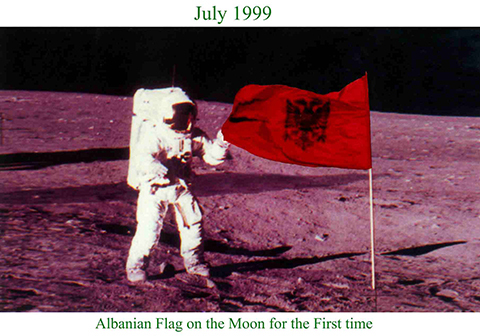
|
Ausstellung / Exhibition
mit Werken von / with works by Maria Thereza Alves, Heba Y. Amin, Yael Bartana, Eric Baudelaire, Rossella Biscotti, Mariana Castillo Deball, Octora Chan, Minerva Cuevas, Ho Rui An, Gülsün Karamustafa, Runo Lagomarsino, Maha Maamoun, David Maljković, Naeem Mohaiemen, Rabih Mroué, ALIAS by Damián Ortega, Arin Rungjang, Anri Sala, Erzen Shkololli, Sriwhana Spong, TROI OI (Nhu Dhong & Sung Tieu), Milica Tomić , Nora Turato, Akram Zataari
Im Deutschen verbindet sich bereits im Begriff »Geschichte« die Doppeldeutigkeit von Geschichtsschreibung und -weitergabe. Der offiziellen, scheinbar verbindlichen Erzählung von Geschichte stehen andere politische, individuelle und subjektive Interpretationen gegenüber. Hierfür gibt es vielfältige Gründe: politische Systemwechsel, Traumata oder, und dies nicht zuletzt, die kritische Reflexion an der imperialistischen Erzählung. Die Gruppenausstellung Deep
Sounding - Geschichte als multiple Erzählung vereint aktuelle und ehemalige Stipendiatinnen des Berliner Künstlerprogramms und weitere Künstler mit einem Interesse für verschiedene Faktoren und Hintergrundnarrationen, die eine Multiperspektivität auf Geschichte erzeugen. Ein besonderes Augenmerk gilt den daraus entstehenden subjektiven Geschichtsschreibungen, die den kognitiven Prozess der Geschichtsverarbeitung und das Neu-Denken von (oft auch fiktiven) Geschichten umfassen. Ausgangspunkt für neue Erzählungen bilden oftmals die Neu-Ordnung des Dokumentarischen und der Bruch mit der Linearität. Neben der Rolle von sprachlichen Erzählstrukturen und Sprachpolitik, wird insbesondere die Sinnlichkeit des aufgeladenen Materials historischer Ereignisse für die Künstlerinnen zum Träger der Erzählung.
Die Ausstellung findet in der daadgalerie auf beiden Stockwerken statt und wird von einem Performanceprogramm begleitet.
______________________
In German, the dual meaning of the word Geschichte as both »history« and »story« highlights the key role played by narrative in the recording and telling of historical events. The ‘official’ and seemingly binding narrative of history is challenged by other interpretations that reflect a range of political, individual and subjective views. The reasons for such divergent perspectives are manifold and include traumas, changes to political systems and, not least, critical reflections on the imperialist narrative. Deep Sounding – History as Multiple Narratives brings together artists with a shared interest in exploring the factors and background narratives that generate multiple perspectives on history. A particular focus of this presentation, which also includes works by current and former guests of the DAAD Artists-in-Berlin Program, are the subjective historiographies that emerge as a result of multiperspectivity. These involve the cognitive processes of assimilating history and rethinking existing – and often fictitious – hi(stories). The act of rearranging documentary material or breaking with linearity frequently provides the starting point for the creation of new narratives. In addition to linguistic narrative structures and language policy, above all the sensuousness of the charged material of historical
events serves the participating artists as a vehicle of narrative communication.
The exhibition extends over both floors of the daadgalerie and is accompanied by a programme of performance-based events.
Kuratiert von / curated by Anna Catharina Gebbers und / and Melanie Roumiguière
Eintritt frei / free admission
daadgalerie, Oranienstraße 161, 10969 Berlin
|
| |
|
7
|
Mi
20:00
|
Deep Sounding: Eric Baudelaire
»The Ugly One«
|
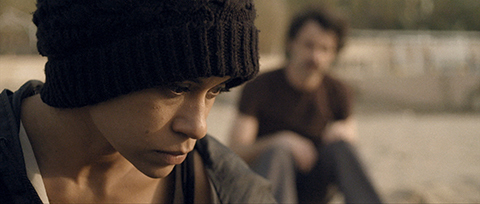
|
Film Screening
»The Ugly One« ist die zweite Zusammenarbeit von Eric Baudelaire und Masao Adachi, dem legendären japanischen New Wave-Filmemacher. Adachi, Drehbuchautor für die Regisseure Nagisa Ōshima und Kōji Wakamatsu und ehemaliges Mitglied der Terrororganisation Japanische Rote Armee, hatte seit 1972 keinen Auftrag erhalten, ein Drehbuch zu schreiben. Nach ihrer ersten Zusammenarbeit am Dokumentarfilm »The Anabasis of May and
Fusako Shigenobu, Masao Adachi and 27 Years Without Images« (2011), der fiktive und subjektive Räume in einer dokumentarischen Form eröffnete, bat Baudelaire Adachi, ein Drehbuch für einen zweiten Film zu entwickeln: eine fiktionale Narration, die viele der gleichen Probleme beleuchten sollte.
»The Ugly One« invertiert die Dynamik der ersten Zusammenarbeit und untersucht die biografischen und dokumentarischen Möglichkeiten eines Spielfilms. Entstanden ist die Geschichte von Lili und Michel, dargestellt von Rabih Mroué, die versuchen, Fragmente einer ungewissen Vergangenheit zusammenzusetzen. Erinnerungen kommen hoch: ein Terrorakt, eine Explosion und das Verschwinden eines Kindes. Mit diesen Fragmenten ist die Stimme eines japanischen Erzählers verwoben, der seine eigenen Erfahrungen eines »weinenden Beiruts« und seiner geheimen Jahre erzählt, in denen er als
Mitglied der Japanischen Roten Armee an der Seite der Palästinenser kämpfte. Es ist die Biografie des Drehbuchautors Masao Adachi, der sich als radikaler Aktivist für den bewaffneten Kampf der Palästinenser engagierte und mehrere Jahrzehnte im Libanon im Untergrund lebte.
____________________
»The Ugly One« is the product of the second collaboration between Eric Baudelaire and Masao Adachi, a legendary Japanese New Wave filmmaker and screenwriter who is also a former member of the Japanese Red Army terrorist group. Baudelaire first worked with Adachi on the documentary »The Anabasis of May and Fusako Shigenobu, Masao Adachi and 27 Years Without Images« (2011), which opened up fictional and subjective spaces
within a documentary format. Baudelaire subsequently asked Adachi to develop a script for a second film: a fictional narrative dealing with many of the same themes. Although Adachi was known for his scriptwriting work for directors Nagisa Ōshima and Kōji Wakamatsu, he had not been commissioned to write an original screenplay since 1972.
»The Ugly One« inverts the dynamics of Baudelaire and Adachi’s first collaboration, and explores the biographical and documentary possibilities of a narrative film. It tells the story of Lili and Michel, played by Rabih Mroué, who are trying to piece together the fragments of an uncertain past. Memories emerge of an act of terrorism, an explosion and a child’s disappearance. Woven through these fragments is the voice of a Japanese narrator who recounts his personal experiences of a “weeping Beirut” and of his secret years as a member of the Japanese Red Army, fighting
alongside Palestinians. It is the biography of Masao Adachi who, as a radical activist committed to pursuing the Palestinian cause through armed conflict, went underground in Lebanon for several decades.
Eric Baudelaire, The Ugly One, 2013, HD video, colour, sound, 101', courtesy: the artist and LUX, London
Auf Japanisch, Libanesisch, Englisch, Französisch / in Japanese, Lebanese, English, French
Eintritt frei / admission free
daadgalerie 1.OG, Oranienstraße 161, 10969 Berlin
|
| |
|
8
|
Do
20:00
|
Deep Sounding: Rabih Mroué
»Trilogy - (A short Version)«
|
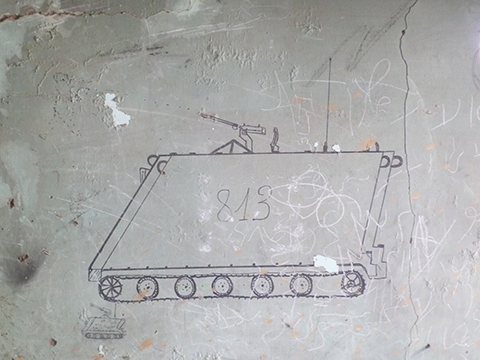
|
Lecture Performance
Mit »Trilogy - (A short Version)« präsentiert Rabih Mroué eine Performance, die aus ausgewählten Kapiteln seiner drei weltweit gefeierten sogenannten »non academic lectures« besteht: »On Three Posters«, »The Inhabitants of Images« und »The Pixelated Revolution«.
»Trilogy - (A short Version)« hebt die kritische Intensität hervor, mit der Mroué die Prozesse der Erstellung und Verbreitung visueller Dokumente im heutigen Libanon und im Nahen Osten untersucht. Seine Arbeiten erforschen die Politik der Repräsentation, indem sie gefundenes Material — Fotografien und Videos — auf die Kinoleinwand projizieren und mögliche Gegenerzählungen skizzieren. Die nicht-akademischen Vorträge von Mroué, die als Live-Untersuchungen nicht nur von offizieller Repräsentation, sondern auch von eigenen Repräsentationsformen inszeniert werden, hinterfragen die Fähigkeit von Objekten, Bildern, Wörtern und Tönen, Zeugnis über die komplexen, vielschichtigen Realitäten der libanesischen Gesellschaft zu geben, vor allem im Hinblick auf globale Politik und Krieg. In der Erkenntnis, dass unser Handeln durch die Art und Weise beeinflusst und bedingt
wird, wie wir Wissen interpretieren, ordnen und darstellen, stellt er kritische Instrumente für die Auseinandersetzung mit Bildern und Geschichten vor: Was passiert, wenn wir involviert werden, in den Prozess verwickelt sind, wenn wir Bilder und Erzählungen bewohnen, Teil von Situationen werden, sie gleichzeitig lesen und schreiben?
____________________
Rabih Mroué presents »Trilogy – (A short version)«, which consists of selected chapters from three of his highly acclaimed »non-academic lectures«: »On Three Posters,« »The Inhabitants of Images« and »The Pixelated Revolution«.
»Trilogy – (A short version)« highlights the critical intensity with which Mroué enquires into the processes of constructing and distributing visual documents in contemporary Lebanon and the Middle East. His works explore the politics of representation by projecting found materials—photographs and videos—on the cinema screen and sketching possible counter-narratives. Staged as live investigations, not only into official representation but also into his own form of representation, Mroué’s non-academic lectures question the ability of objects, images, words and sounds to bear witness to the complex layered realities of Lebanon society, let alone global politics and war. Recognising that our actions are affected and conditioned by the way we interpret, order and depict knowledge, he puts forward instruments of critique for engaging with images and histories: what
happens when we become involved, implicated in the process? What does it mean when we inhabit images and narratives, becoming part of situations, reading and writing?
Auf Englisch / in English
Eintritt frei / admission free
daadgalerie 1.OG, Oranienstraße 161, 10969 Berlin
|
| |
|
10
|
Sa
11:30–
19:30
|
Of Restless Cities and Ingenious Characters
|

|
Symposium
Parallel zu Bani Abidis aktueller Ausstellung »They Died Laughing« im Gropius Bau eröffnet das Symposium in der daadgalerie einen interdisziplinären Dialog zur künstlerischen Praxis Bani Abidis und dem zeitgenössischen Kontext Pakistans mit Perspektiven aus den Bereichen Fiktion, Schallgedächtnis, Sicherheitsinfrastruktur, südasiatische Geschichte und islamische Philosophie. Die Beiträge der
Teilnehmerinnen und Teilnehmer, die zum Teil seit Jahren im Austausch mit Bani Abidi stehen, erstrecken sich über Disziplinen wie Geschichte und Anthropologie bis hin zu Architektur, Literatur und bildender Kunst. Die im Programm vorgestellten auditiven und literarischen Kontexte sind dabei mehr als nur Wahrnehmungswerkzeuge; sie bieten auch neue Skizzen, um kulturelle Praxis innerhalb einer ungleichen gesellschaftlichen Infrastruktur zu verstehen.
Bani Abidi war 2011 Gast des Berliner Künstlerprogramms des DAAD.
____________________
Parallel to Bani Abidi's current exhibition »They Died Laughing« at the Gropius Bau, the daadgalerie hosts a symposium opening an interdisciplinary dialogue around the artistic practice of Bani Abidi and the contemporary context of Pakistan through the lens of fiction, sonic memory, security infrastructure, South Asian history and Islamic philosophy. Participants present their accounts from the fields of
history, anthropology, architecture, literature, and visual art, many of whom have been interlocutors to the artist over several years. The auditory and literary contexts presented in the programme are not only tools of sensing but also establish new contours to comprehend cultural practice within an uneven societal infrastructure.
Bani Abidi was a guest of the DAAD Artists-in-Berlin Program in 2011.
Mit / with Vazira Fazila-Yacoobali Zamindar, Adnan Madani, Omar Kasmani, Brandon LaBelle, Adania Shibli, Niloufar Tajeri, Simone Wille.
Organisiert von / organised by Bani Abidi, Natasha Ginwala, Associate Curator, und / and Melanie Roumiguière, Leitung Bildende Kunst des Berliner Künstlerprogramms des DAAD / Head of Visual Arts of DAAD Artists-in-Berlin Program.
In Zusammenarbeit mit / in collaboration with Berliner Festspiele / Gropius Bau
Auf Deutsch und Englisch / in German and English
Eintritt frei, keine Anmeldung notwendig /
Admission free, no registration required
daadgalerie 1.OG, Oranienstraße 161, 10969 Berlin
|
| |
|
15
|
Do
19:00
|
Berlin Interviews
|
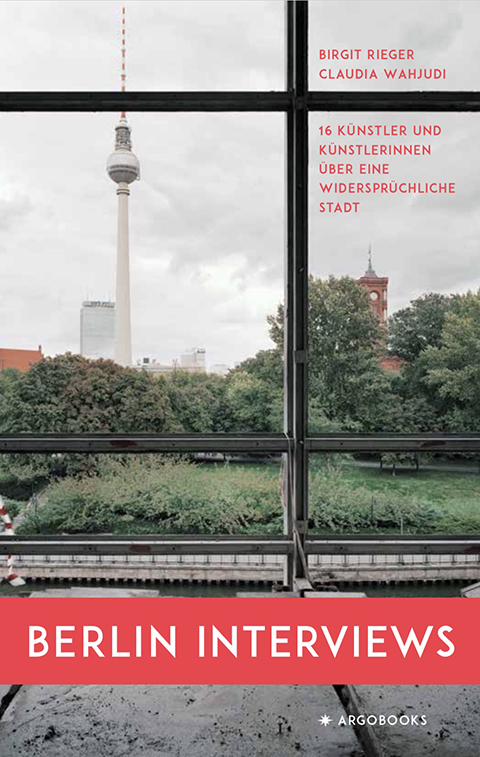
|
Buchpräsentation / Book Launch
Mit / with Ann Noël, Mathilde ter Heijne, Birgit Rieger und / and Claudia Wahjudi
Moderation: Melanie Roumiguière
Chance Berlin? Gespräche mit 16 Künstlerinnen und Künstlern
Nirgendwo sind die Vernissagen so voll wie in Berlin. Nirgendwo sonst bleibt so wenig für Künstler übrig. Dieser Zwiespalt charakterisiert die Kunststadt Berlin. Und doch entscheiden sich Künstler und Künstlerinnen aus aller Welt, hier zu leben und zu arbeiten. Und viele bleiben, obwohl sie das nie vorhatten. Sind es künstlerische Gründe, persönliche oder politische, die sie hier halten? Locken immer noch die Freiräume der ehemaligen Mauerstadt – oder sind mittlerweile Faktoren wie Meinungsfreiheit wichtiger? Welche Kunst entsteht in einer Stadt, die oft selbst nicht weiß, wofür sie steht?
Die Journalistinnen Birgit Rieger und Claudia Wahjudi haben Gespräche mit 16 Künstlern und Künstlerinnen geführt, die zu unterschiedlichen Zeiten aus verschiedenen Ländern nach Berlin gezogen sind. Von der britischen Fluxus-Pionierin Ann Noël, die vor 40 Jahren kam, bis zu dem jungen Performance-Künstler Dachil Sado, der aus dem Irak floh, von der Bildhauerin Monica Bonvicini aus Venedig, die in West-Berlin Kohleöfen kennenlernte, bis zu dem Klangkünstler Emeka Ogboh aus Lagos, der ein spezielles Berliner Bier braut: In dem Buch berichten sie von Herausforderungen, Zumutungen, Zufällen und Chancen in einer Stadt, die sich in den 30 Jahren nach dem Mauerfall so rasant verändert hat wie keine andere in Deutschland.
________________
Chance Berlin? Discussions with Sixteen Artists
Nowhere are the openings as full as they are in Berlin. Nowhere else is there so little left over for artists. This dichotomy characterizes the art city of Berlin. Yet, artists from around the world choose to live and work here. Moreover, many remain, although they had never planned to. Is it artistic, personal or political reasons that keep them here? Are the available spaces of the former walled city still tempting, or are factors like freedom of expression more important in the meantime? What kind of art is created in a city that often does not itself know what it stands for?
Journalists Birgit Rieger and Claudia Wahjudi discussed these ideas with sixteen artists who have moved to Berlin from different countries at various times. From British Fluxus pioneer, Ann Noël, who arrived forty years ago, to young performance artist, Dachil Sado, who fled from Iraq, from sculptor Monica Bonvicini from Venice, who became acquainted with coal stoves in West Berlin, to sound artist Emeka Ogboh from Lagos, who brews a special Berlin beer: In the book, they tell of challenges, expectations, coincidences and chances in a city that has changed more rapidly than any other German city in the thirty years since the fall of the Wall.
Berlin Interviews
Birgit Rieger und / and Claudia Wahjudi
im Gespräch mit / in conversation with Ryszard Wasko, Ann Noël, Monica Bonvicini, Else Gabriel, Nina Fischer, Maroan El Sani, Mathilde ter Heijne, Karin Sander, Omer Fast, Loredana Nemes, Ming Wong, Aykan Safoğlu, Hanne Lippard, Emeka Ogboh, Dachil Sado, Fernando Bryce
Mit einem Grußwort von / with a greeting by Akademie der Künste
21 x 13,5 cm, 107 Abbildungen / images
Deutsch / German, 350 Seiten / pages
Argobooks, EUR 19,80
ISBN: 978-3-942700-92-4
Auf Deutsch und Englisch / in German and English
Eintritt frei / admission free
daadgalerie 1.OG, Oranienstraße 161, 10969 Berlin
|
| |
|
|
|
New In Town
|
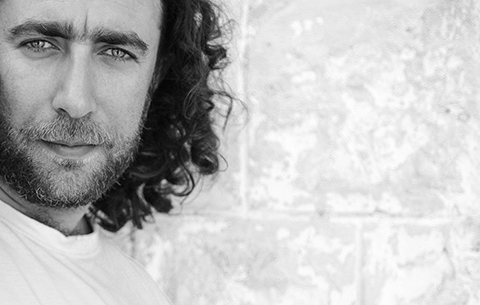
|
Ghayath Almadhoun wurde als Sohn eines palästinensischen Emigranten und einer Syrerin in einem Flüchtlingslager in Damaskus, Syrien geboren. 2008 suchte der Lyriker in Stockholm politisches Asyl, wo er seitdem lebt. Seine Gedichte handeln von Heimat und Exil und thematisieren mit schwarzem Humor schonungslos die Schrecken und
Gewalt des Krieges. Seit der syrischen Revolution beschäftigen den Dichter vor allem der »Widerstreit zwischen Moderne und Tradition, zwischen Neu und Alt, Feminismus und Patriarchat, Bevölkerung und Diktatur, zwischen jungen DichterInnen und Altmännerdichtern.« Revolutionär in ebendiesem Sinne ist auch Almadhouns Schreiben: rebellisch, kämpferisch, kritisch, sehnsüchtig. 2019/20 ist er Gast des Berliner Künstlerprogramms des DAAD.
____________________
Ghayath Almadhoun was born the son of a Palestinian emigre father and a Syrian mother in a refugee camp in Damascus, Syria. In 2008, the poet sought political asylum in Stockholm, where he has lived ever since. His poems are about homeland and exile and use black humor to mercilessly address the horrors and violence of war. Since the Syrian revolution, the poet has been preoccupied with the »conflict between modernity and tradition, between new and old, feminism and patriarchy, population and dictatorship, between young
poets and old-man poets.« Almadhoun’s writing is also revolutionary in this sense: rebellious, combative, critical, yearning. 2019-20, he is a DAAD writer in residence.
|
| |
|
|
|
Aktuell anwesende Gäste / Current Guests
|
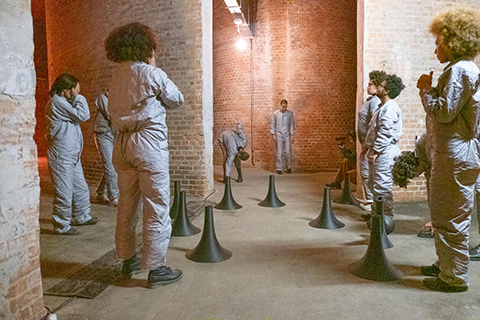
|
Bildende Kunst / Visual Arts
Pierre Bismuth — Frankreich, Belgien / France, Belgium
Burak Delier — Türkei / Turkey
Ieva Epnere — Lettland / Latvia
Edi Hila — Albanien / Albania
Mathieu Kleyebe Abonnenc — Frankreich / France
Runo Lagomarsino — Schweden, Brasilien / Sweden, Brasil
Film
Manuel Abramovich — Argentinien / Argentina
Nelson Carlo de los Santos Arias — Dominikanische Republik / Dominican Republic
Ralitza Petrova — Bulgarien / Bulgaria
Literatur / Literature
Ghayath Almadhoun, Palestina, Schweden / Palestine/Sweden
Don Mee Choi, Südkora / South Korea, USA
Nicoleta Esinencu — Moldawien / Moldavia
Tom McCarthy — Großbritannien / UK, EU
Madame Nielsen — Dänemark / Denmark
Alan Pauls — Argentinien / Argentina
Music
Mirela Ivičević — Kroatien / Croatia
Sergey Kasich — Russland / Russia
Matana Roberts — USA
ICORN
Nada Khawam Al-Bawi
Gastprofessoren Sommersemester 2019 / Visiting Professors Summer Semester 2019
Rudolf-Arnheim-Gastprofessur für Kunstgeschichte:
Prof. Dr. Asko Lehmuskallio — Finnland / Finland
Samuel-Fischer-Gastprofessur für Literatur:
Madeleine Thien — Kanada / Canada
Rawi Hage — Libanon, Kanada / Lebanon, Canada
Siegfried-Unseld-Gastprofessur für Literatur:
Maria Stepanova — Russland / Russia
Edgar-Varèse-Gastprofessur für Computermusik:
Prof Dr Atau Tanakaan — Japan
Valeska-Gert-Gastprofessur für Tanz und Performance:
Navtej Johar — Indien / India
Bildnachweise / Picture credits
Erzen Shkololli Albanian Flag on the Moon, 2001, courtesy Erzen Shkololli
Eric Baudelaire, The Ugly One, 2013, video still, courtesy the artist & LUX, London
Rabih Mroué, courtesy the artist
Installationsansicht Bani Abidi, They Died Laughing, Gropius Bau, Berlin, 2019 (Mathias Völzke), courtesy die Künstlerin & Experimenter, Kolkata
Berlin Interviews, Buchcover, Argobooks, 2019
Ghayath Almadhoun (Khulood Tannous)
Ashley Fure, Hive Rise, Werkstattkonzert im Großen Wasserspeicher Prenzlauer Berg, Juli 2019 (Krzysztof Zieliński)
|
|
Markgrafenstraße 37
D-10117 Berlin
U2 Hausvogteiplatz
U6 Französische Straße
Telefon: +49 30 20 22 08 - 20
Telefax: +49 30 204 12 67
Oranienstraße 161
10969 Berlin
U8 Moritzplatz
U1/U8 Kottbusser Tor
|

|
  Das Berliner Künstlerprogramm Das Berliner Künstlerprogramm
des DAAD wird gefördert aus
Mitteln des Auswärtigen Amtes
und des Berliner Senats.
|
|
Dieser Newsletter wird bereitgestellt von: Deutscher Akademischer Austauschdienst e.V., rechtlich vertreten durch Frau Dr. Dorothea Rüland, Kennedyallee 50, D-53175 Bonn.
Vereinssitz: Bonn (Deutschland), eingetragen beim Amtsgericht Bonn, Registergericht VR 2105.
Redaktion: Silvia Fehrmann, Katja Timmerberg.
Haftungshinweis: Wir übernehmen keine Haftung für die Inhalte Dritter. Für den Inhalt verlinkter Seiten sind ausschließlich deren Betreiber zuständig.
Copyright © by DAAD e.V. Der Inhalt dieses Newsletters ist urheberrechtlich geschützt. Alle Rechte vorbehalten. Die Verwendung des Textes - auch auszugsweise – und der Bilder ohne vorheriges schriftliches Einverständnis des DAAD ist nicht gestattet.
This newsletter has been prepared by: Deutscher Akademischer Austauschdienst e.V., legally represented by Dr. Dorothea Rüland, Kennedyallee 50, D-53175 Bonn.
Head office: Bonn (Germany), registered with the Bonn District Court, Commercial Register Court VR 2105.
Editorial staff: Silvia Fehrmann, Katja Timmerberg.
Liability Notice: We are not liable for the content of any websites run by third parties. This remains solely the responsibility of the third parties.
Copyright © by DAAD e.V. The content of this newsletter is copyright-protected. All rights reserved. The full or partial reproduction of a text or images without prior permission by the DAAD is prohibited.
|
|
|


